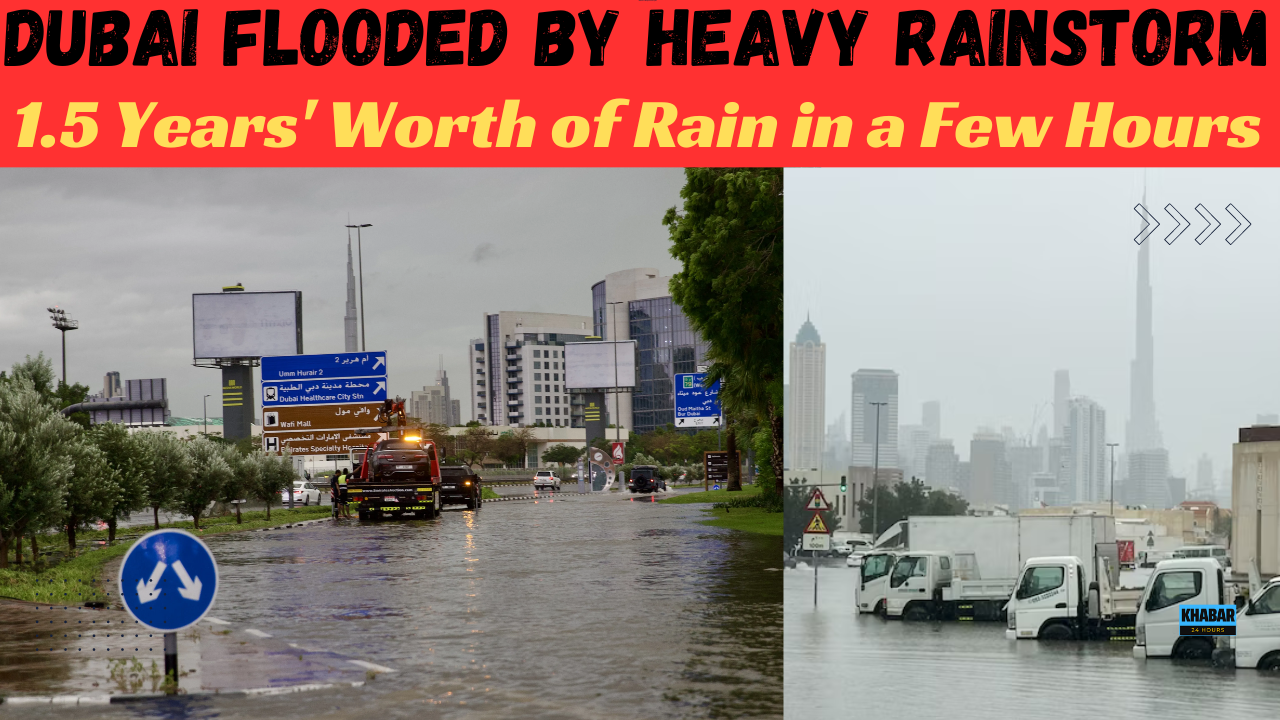Dubai’s airport, driverless metro rail system, and extensive roadways faced inundation as intense thunderstorms swept across the United Arab Emirates.
The desert metropolis of Dubai encountered an uncommon beginning to the week as powerful thunderstorms battered the city and various regions of the UAE, resulting in significant flooding on major road networks, airports, and the city’s automated metro rail system. Reports from news agencies indicate that Tuesday’s storms unleashed rainfall equivalent to over a year and a half’s accumulation on Dubai.
Fujairah, situated on the eastern coast of the UAE, emerged as the sole emirate experiencing greater rainfall than Dubai. On Tuesday, it recorded the most substantial precipitation, with 145 millimeters (5.7 inches) of rainfall.
In Ras al-Khaimah, the northernmost emirate of the country, authorities reported a fatality. According to local police, a 70-year-old individual lost his life when his vehicle was carried away by floodwaters.
Visitors at the Mall of the Emirates, among the globe’s largest shopping complexes, were astonished as water cascaded from the ceiling and sections of it collapsed amid the relentless rainfall, marking the most significant precipitation event for the country in 75 years.
Sharjah City Centre and the Deira City Centre likewise incurred damage as a result of the continuous rainfall.
At the airport, taxiways were submerged in standing water as aircraft touched down. Arrivals were eventually halted on Tuesday night, and passengers faced difficulties reaching terminals due to floodwaters inundating surrounding roads. Numerous drivers grappled with towing their vehicles from the unexpectedly deep water covering certain roads.
Authorities dispatched tanker trucks to the streets and highways to pump out the water, which had also seeped into several residences.
In the span of 24 hours, Dubai recorded over 142 millimeters of rainfall, far exceeding the average annual precipitation of 94.7 millimeters, according to data from Dubai International Airport. This airport, renowned as the world’s busiest for international travel and a key hub for the long-haul carrier Emirates, serves as the source of this information.
Bolts of lightning streaked across the sky, intermittently reaching the summit of the Burj Khalifa, the tallest building in the world.
The UAE, being an arid nation located in the Arabian Peninsula, typically experiences minimal rainfall, mostly occurring sporadically during the cooler winter period. This scarcity of rain has resulted in inadequate drainage systems on many roads and other areas, contributing to instances of flooding. Rainfall was also observed in Bahrain, Qatar, and Saudi Arabia.
According to the global flight tracker Flightradar24, Dubai airport received a 5-point score on the arrival delay index on Tuesday. This index serves as a forecast for potential arrival disruptions, with higher scores indicating an increased probability of delays and cancellations.
In nearby Oman, a sultanate situated on the eastern edge of the Arabian Peninsula, at least 18 individuals lost their lives in the recent heavy rains, as reported by the country’s National Committee for Emergency Management on Tuesday.
Among the casualties were approximately 10 schoolchildren who were swept away in a vehicle along with an adult. Condolences poured into the country from leaders across the region in response to this tragic incident.

